John E continues his sharing of orchids he has in bloom. We don’t have events at this time of the year for club members to see these. Thanks John and Winsome for the photos.
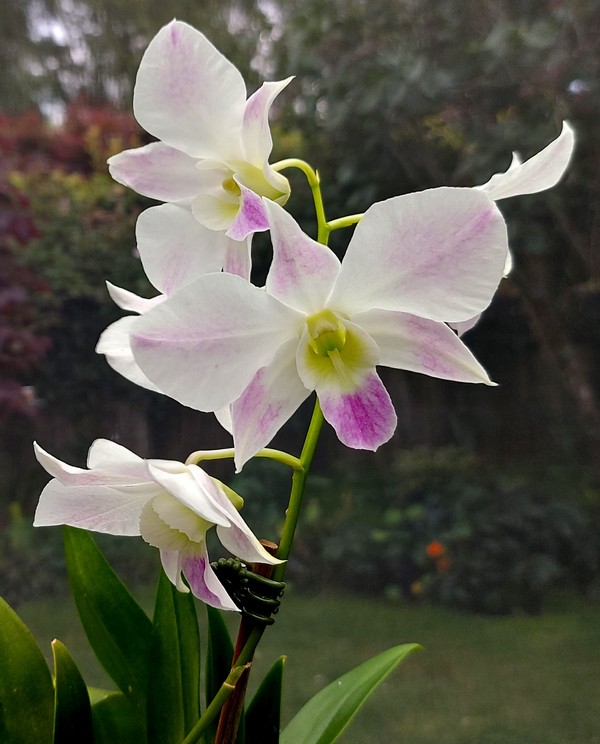
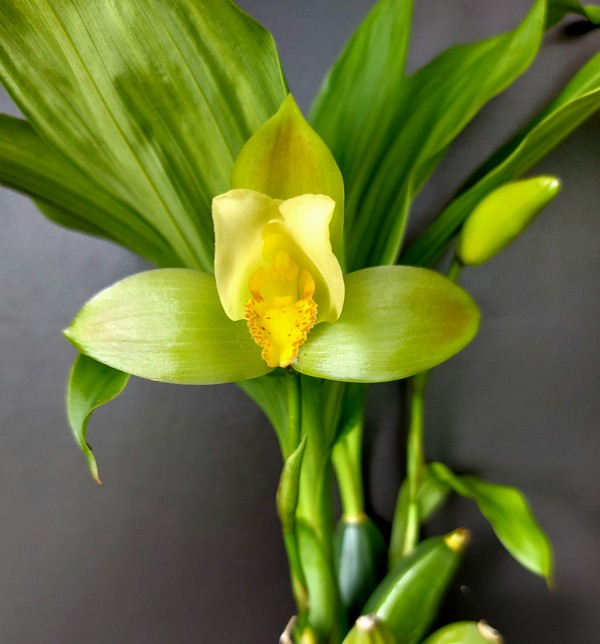
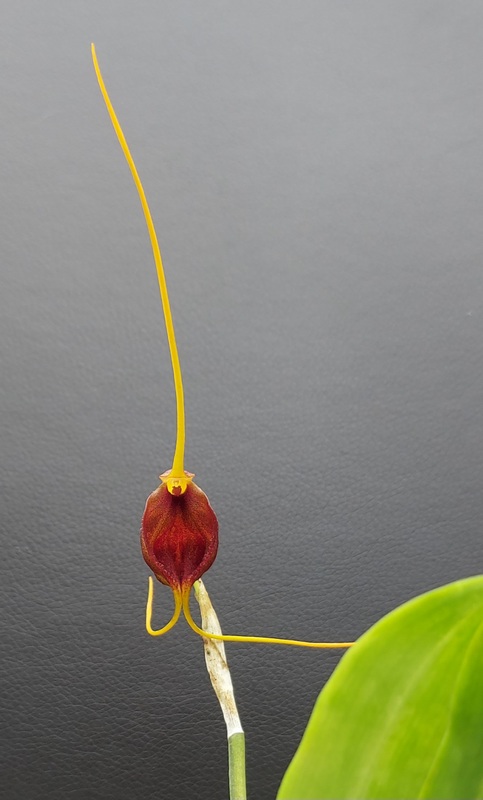
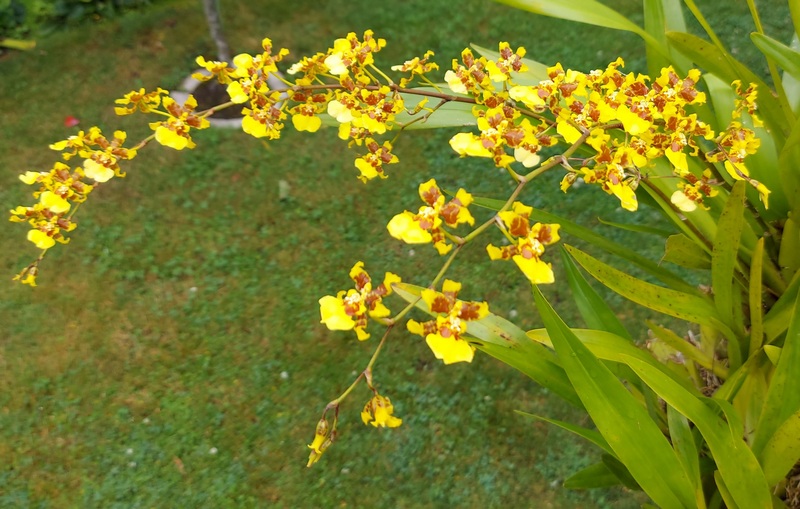
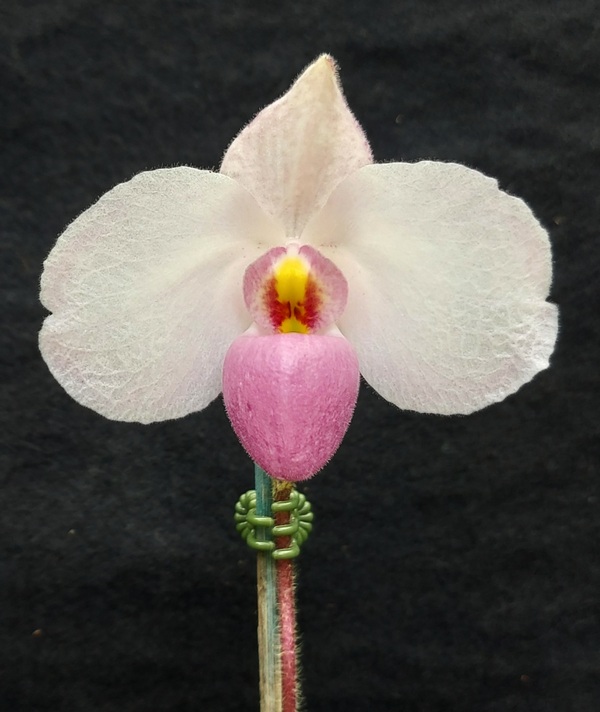
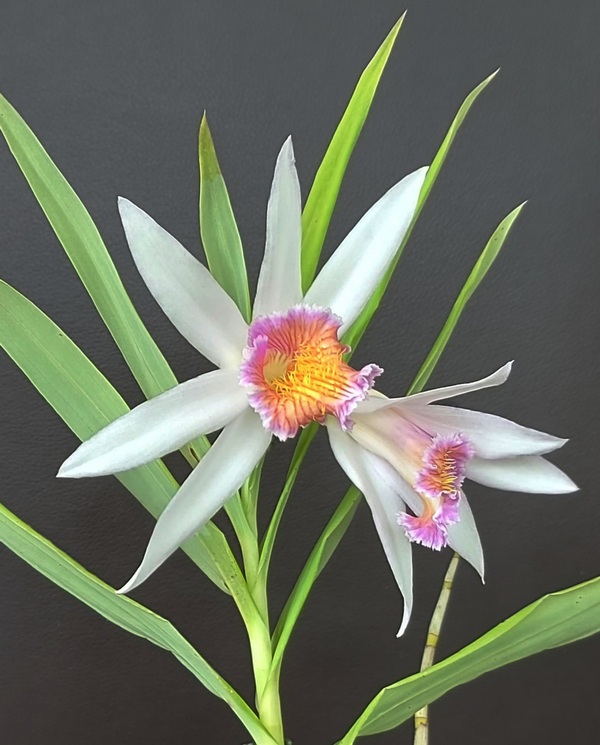

John E continues his sharing of orchids he has in bloom. We don’t have events at this time of the year for club members to see these. Thanks John and Winsome for the photos.






This article has been put together from a talk Lee Neale (Leroy Orchids) gave at the 2019 National Orchid Expo and an article written in about 2005 by Jim Freeman of the Manhattan Orchid Society in New York.
Latouria dendrobiums – prolific flowering plants that come in a variety of colours with long-lasting flowers that can have dots, stripes, and bars – come from New Guinea, The Philippines, part of Indonesia, Melanesia (New Caledonia, Vanuatu, Solomon Islands and Fiji) and Australia. Fifty-three species have been identified (45 in New Guinea alone) but there could be up to 100.

In their native habitat the various Latouria species can be found from sea level up to about 3,800m, but they all get year-round rainfall, something to remember when we grow them. They are epiphytic plants, vigorous growers and tolerant to extremes in temperature.
Discovered by Blume in 1850, the genus was named for French botanist Leschenault de la Tour (1773−1826) and reclassified into Dendrobiums in 1855. However, Latouria orchids didn’t seriously catch the eye of hybridisers until the 1980s and 1990s. What makes them attractive to the hobby grower?
What are the down sides? Larger plants have tall, narrow pseudobulbs that can make for ungainly plants that tip over easily (but we already have plants like that, don’t we?) and flowers can be hidden under the top leaves or droop their heads on the stem. These shortcomings are being addressed by both line-breeding of species and hybridising, while the drooping flower issue can be countered by planting in a hanging basket.
Roy Tokunaga, of H & R Orchids in Hawaii, is one of the world’s top Latouria breeders. Leroy Orchids has imported many flasks from Roy and visited his business in Hawaii.
In Auckland conditions, which aren’t too dissimilar to those of Tauranga, Lee finds the plants don’t take a winter rest, although need less water then than in summer.

She pots them using a bit of fern fibre/sphagnum to help retain water, mixed with No 2 or No 3 bark and, to sharpen drainage, some pumice. The plants, which have fine roots, are fertilised with each watering and receive a feed of calcium once a month (Lee believes monthly calcium helps her plants grow more strongly). They need constant air movement and protection from direct sunlight, although like a good level of light. Lee repots when the new growths reach the side of the pot, moving the plant up just one size of pot.
If you have a top-heavy plant consider using a terracotta pot to help ‘anchor it’ but be aware that you’ll need to water it more often in summer.
Latouria Species and Hybrids
Possibly the most popular species for modern hybridising is Den. atroviolaceum; it’s compact, has purple-spotted white flowers that are large for the size of the plant, grows easily and can remain in bloom for up to 6 months. A pretty plant in its own right, it is the parent of a number of well-known hybrids such as Andree Millar, Roy Tokunaga and Wonder Nishii.
Den. aberrans is a true mini with pseudobulbs only a few inches tall. From the tips sprout little white flowers, blush pink around the labellum; they last and last and last — some claim up to 9 months! Its primary hybrids, Maiden Charlotte, Mini Snowflake, Micro Chip and Lutin Blanc, are near-perfect windowsill orchids, being under 15cm high.
Den. alexanderae has red-spotted twisted petals and a red-veined dagger-shaped lip and is one of the taller-growing species, but its size can be controlled in hybrids such as Green Elf and Spider Lily. It also has a warm, honey-like scent that may be passed on to its progeny!
Den. convolutum is the best-known warm-growing, green-flowered species. It stands about a 30cm high, can flower any time during the year, and the flowers typically last up to 6 months. Combined with Den. atroviolaceum it produces Andree Millar, and with Den. aberrans makes Aussie’s Pixie. Other well-known hybrids include Gerald McCraith, Green Elf and Key Lime.
Den. johnsoniae may be the most gorgeous Latouria: Its large white flowers have upswept petals and sepals like wings, and red lines in the lip. These qualities have earned it awards as a straight species, unusual for a Latouria. It’s a parent of such distinguished hybrids as Roy Tokunaga and Stephen Batchelor. Its flowers also last for months and can occur in any season.

Den. macrophyllum has a wide native habitat which means it grows well in a variety of conditions. It’s one of the tallest, with pseudobulbs over 60cm high. Flower count is up to 25 per spike, and its green-to-yellow flowers have a good size and shape. It was parent to many early Latouria hybrids, such as New Guinea, Nellie, and Caprice.
Den. rhodostictum is another compact gem similar to Den. johnsoniae in size and looks: its white flowers have purple spots on the lip margins and are held above the foliage, they may have a light fragrance. Roy Tokunaga liked it so much he named one of its primary hybrids Nora Tokunaga after his wife; it’s also the other half of the popular Maiden Charlotte.

Den. spectabile has bizarrely corkscrewed petals and sepals, yellow-green with heavy maroon spotting. It has a strong, sweet fragrance, rare in this group. It grows upwards of 60cm tall, with spikes rising up above the leaves. As a parent, it adds drama to hybrids like Adara Nishii and Woodlawn.